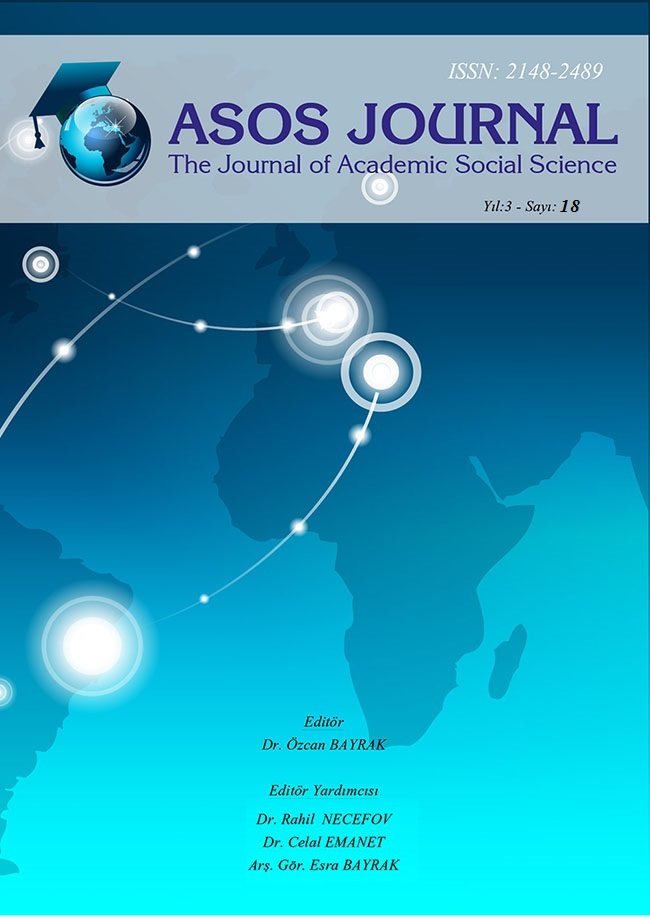DEĞİŞEN DÜNYA DÜZENİ ile BİRLİKTE MODERN MİMARLIĞIN DOĞUŞU, GEÇ MODERNİZM ve RICHARD MEIER MÜZELERİ ÜZERİNE KESTİRİMLER
Author :
Abstract
Bu çalışma, II. Dünya Savaşının hemen ardından değişen dünya düzeninin insanlara getirmiş olduğu zorunluluklarla şekillenmiş olan Modern Mimarlık kavramını anlamaya yönelik bir incelemedir. Yapmış olduğumuz bu inceleme boyunca, Modern mimari ve onun öncülerinden bahsederken, Modenizmin eksik yönlerinden doğmuş olan Geç Modernizm kavramına ve onun öncülerinden biri sayılan Richard Meier ve üslubunu da değineceğiz. Bu araştırmada ayrıca dünyanın en iyi on mimarı içerisinde gösterilen ve hala aktif olarak mimarlık, ürün tasarımı ve heykel gibi alanlarda çalışan II. kuşak ünlü Amerikan mimar Richard Meier’dan bahsederken, onun 20. yüzyıl içerisindeki yerini, duruşunu, Geç Modernizme katkılarını, dönem mimarlarından farkını ve özellikle de Çağdaş Sanat Müzeleri üzerindeki mimari üslubunu da sorgulayacağız. Ayrıca Meier’in tasarlamış olduğu müzeler üzerindeki baskın ama bir o kadar da naif olan tarzını anlatırken, aynı zamanda da mimari açından nelere önem verdiğini ya da benzer gibi g
Keywords
Abstract
This paper researches about understanding the notion of Modern Architecture shaped in the immediate aftermath of the World War II by the requirements of the changing world order. During the research, while treating the Modern Architecture and its pioneers, we will address both the notion of Late Modernism, which arouse from the deficiencies of Modernism, as well as Richard Meier and his style, who is considered to be one of the pioneers of this trend. In addition to this, we will examine the place and position in the 20th century of Richard Meier, a famous second generation American architect listed amongst the top ten architects worldwide with ongoing works in architecture, product design and sculpture, his contributions to Late Modernism, his distinctive characteristics compared to the other architects of his era and especially his architectural style on the Museum of Contemporary Art. Additionally, while explaining his dominant but also naïve style on the museums he designed we
Keywords
- BLASER, W. 1990,”Richard Meier Building For Art”, Berlin.
- BLASER, W. 1990,”Richard Meier Building For Art”, Berlin. BLASER, W. 1996,”Richard Meier Details”, Berlin.
- BORDEN, D. et.al. 2009, “Mimarlık”, İstanbul.
- DEMIRKOL, C.V. 2008, “Batı Sanatında Modernizm ve Postmodernizm”, İstanbul. HEYNEN H. 2011, “Mimarlık ve Modernite”, İstanbul.
- RAGON, M. 2010, “Modern Mimarlık ve Şehircilik Tarihi”, İstanbul. ROTH, L.M. 2000, “Mimarlığın Öyküsü”, İstanbul.
- SEZGIN, F. 2005 “Mimarlığın Geleceği Üzerine Kestirimler” Süleyman Demirel Üniversitesi, Fen Bilimleri Enstitüsü Dergisi, Isparta.
- MEIER, R. 1991 “Architect 2 (1985-1991)”, New York.
- MONNIER, G. 2006 “Mimarlık Tarihi”, Ankara.
- Anonymous, Partners, http://www.richardmeier.com/www/#/practice/partners/1/ (12.03.2013)
- Anonymous, Richard Meierhttp://www.richardmeier.com/www/#/practice/partners/1/162/0/ (12.03.2013)
- Web of stories, The Pleasure of Creating Public Space, 08.09.2011http://www.youtube.com/watch?v=pPDHq7qgXXU&feature=rela (12.03.2013)





